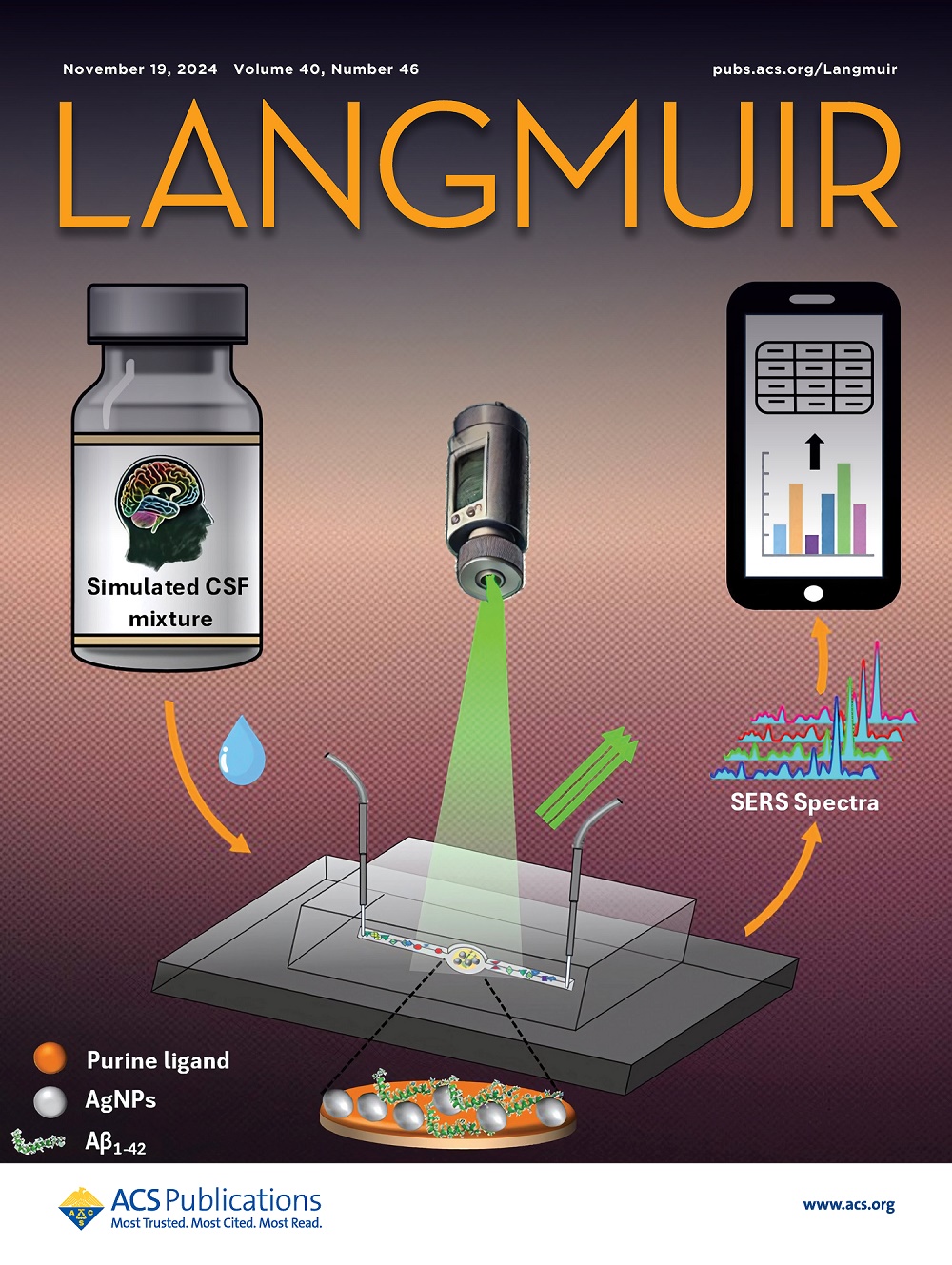纳米气泡稳定性的分子动力学研究:从拉伸到压缩
IF 3.7
2区 化学
Q2 CHEMISTRY, MULTIDISCIPLINARY
引用次数: 0
摘要
本文采用分子动力学模拟的方法,系统地研究了体积液体中氩气纳米泡在拉伸和压缩条件下的稳定状态。热力学条件包括系统中氩原子的平均密度、模拟箱的规模和温度在不同的模拟情况下的变化。提出了一种考虑气液界面曲率对表面张力影响的纳米气泡相边界判别方法,并以此分析了纳米气泡的稳定性。通过平衡时系统压力的时间平均来判断纳米泡的稳定状态:正系统压力意味着纳米泡被压缩,而负压力意味着纳米泡被拉伸。通过降低平均氩气密度、增大体系规模或提高温度,氩气纳米泡的稳定状态由拉伸状态转变为压缩状态。在高压缩条件下,相界面模糊且易变形,纳米气泡失稳温度更接近临界温度。拉氏压力降低,压缩条件下纳米泡失稳对系统压力的影响小于拉伸条件下的影响。本文章由计算机程序翻译,如有差异,请以英文原文为准。

Molecular Dynamics Study on the Stability of Nanobubbles: From Stretch to Compression
This work systematically investigates the stable states of argon vapor nanobubbles emerging in bulk liquid under either stretch or compression using molecular dynamic simulation. Thermodynamic conditions including the average density of argon atoms in the system, scale of the simulation box, and temperature are changed in various simulation cases. A new approach that considers the curvature effect of the gas–liquid interface on surface tension was proposed to distinguish the phase boundary of the nanobubble, by which the stability of the nanobubble is analyzed. The stable states of nanobubbles are judged by time-averaging the system pressure at equilibrium: positive system pressure means that the nanobubble is compressed, while negative pressure means that the nanobubble is stretched. By decreasing the average argon density, increasing the system scale, or increasing the temperature, the stable state of argon vapor nanobubbles changes from stretch to compression. Under higher compression, the phase interfaces are vague and deformable and the nanobubble destabilization temperature is closer to the critical temperature. The Laplace pressure becomes lower, and the decrease in system pressure due to nanobubble destabilizing is less significant under compression than under stretch.
求助全文
通过发布文献求助,成功后即可免费获取论文全文。
去求助
来源期刊

Langmuir
化学-材料科学:综合
CiteScore
6.50
自引率
10.30%
发文量
1464
审稿时长
2.1 months
期刊介绍:
Langmuir is an interdisciplinary journal publishing articles in the following subject categories:
Colloids: surfactants and self-assembly, dispersions, emulsions, foams
Interfaces: adsorption, reactions, films, forces
Biological Interfaces: biocolloids, biomolecular and biomimetic materials
Materials: nano- and mesostructured materials, polymers, gels, liquid crystals
Electrochemistry: interfacial charge transfer, charge transport, electrocatalysis, electrokinetic phenomena, bioelectrochemistry
Devices and Applications: sensors, fluidics, patterning, catalysis, photonic crystals
However, when high-impact, original work is submitted that does not fit within the above categories, decisions to accept or decline such papers will be based on one criteria: What Would Irving Do?
Langmuir ranks #2 in citations out of 136 journals in the category of Physical Chemistry with 113,157 total citations. The journal received an Impact Factor of 4.384*.
This journal is also indexed in the categories of Materials Science (ranked #1) and Multidisciplinary Chemistry (ranked #5).
 求助内容:
求助内容: 应助结果提醒方式:
应助结果提醒方式:


